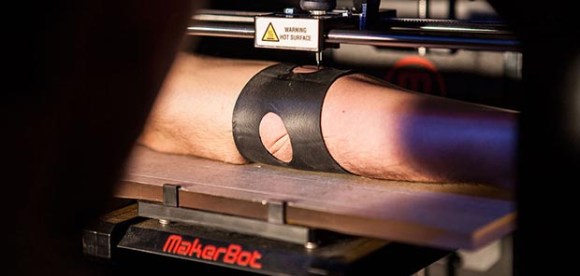This unusual tattoo hack by [Emily The Engineer] is not for the weak of heart, but let’s be frank: we kind of know her for that. And she gives out a warning, albeit at a good 10 minutes in, to not do this at home. What she’s about to do takes creativity and tech obsession to the next level: to transform a 3D printer into a functional tattoo machine. Therefore, [Emily] ingeniously modified one of her standard 3D printers to operate two-dimensionally, swapped its plastic extruder for a tattoo gun, and, yes, even managed to persuade a willing participant to try it out.
The entire process can be seen in [Emily]’s video below, which humorously yet meticulously documents the journey from Sharpie test runs to actually inking skin. Aside from a lot of tongue-in-cheek trial and error, this project requires a sheer amount of problem-solving. [Emily] employs firmware edits to bypass safety checks, and clever hardware adaptations to ensure smooth transitions between strokes. One impressive upgrade is the emergency solenoid system, a literal panic button to stop the machine mid-tattoo in case of trouble—a critical addition for something with needles involved!
This hack sits on the edge of DIY body modification, raising eyebrows and technical questions alike. If you missed the warning and are now frantically searching for tattoo removal options, know we’ve covered some (but you might be rightfully scared of automating that, too, at this point). If you haven’t lifted a finger while reading this, just do the safe thing: watch [Emily]’s video, and tinker about the subsequent purposes this discovery creates for 3D printing or tattoo art.
Continue reading “Do, Dare Or Don’t? Getting Inked By A 3D Printer”













